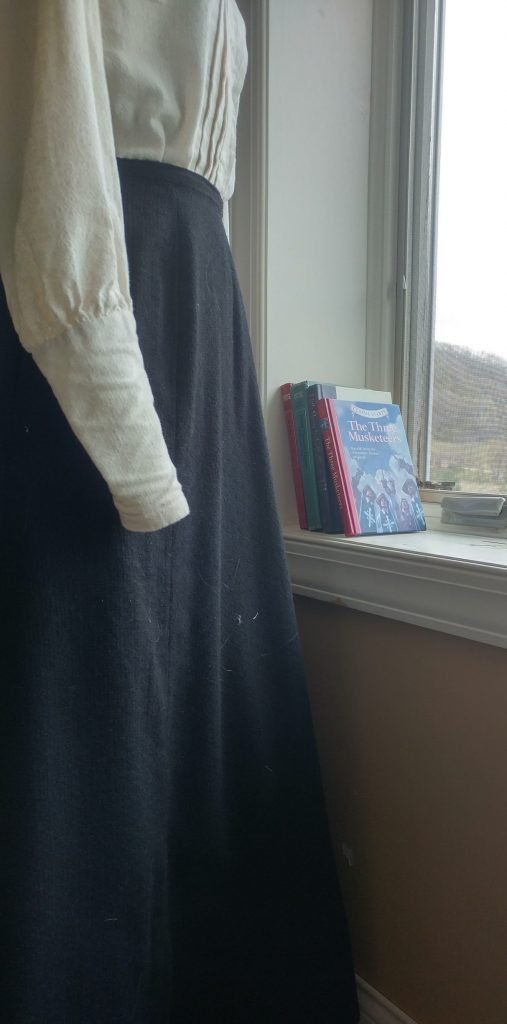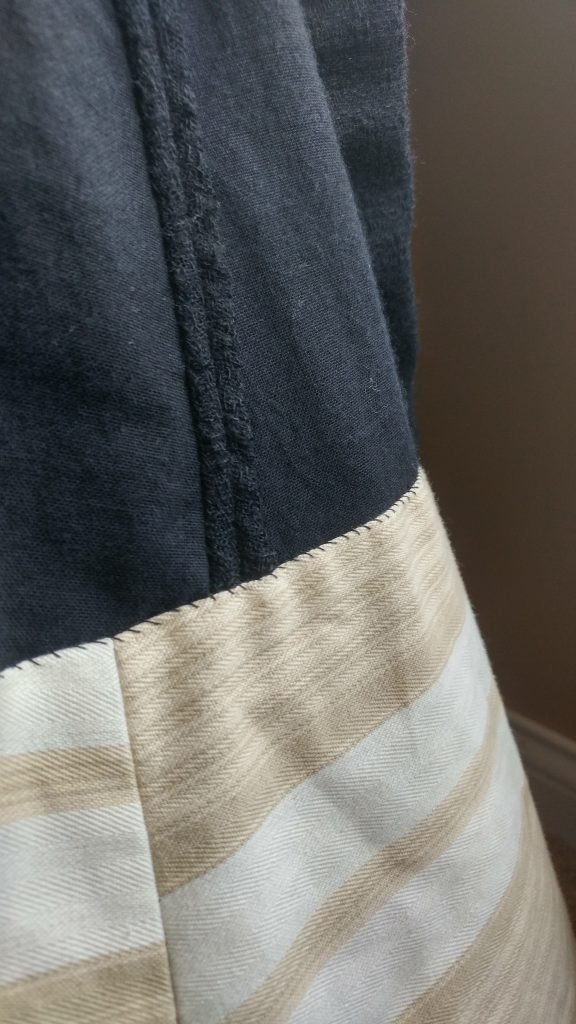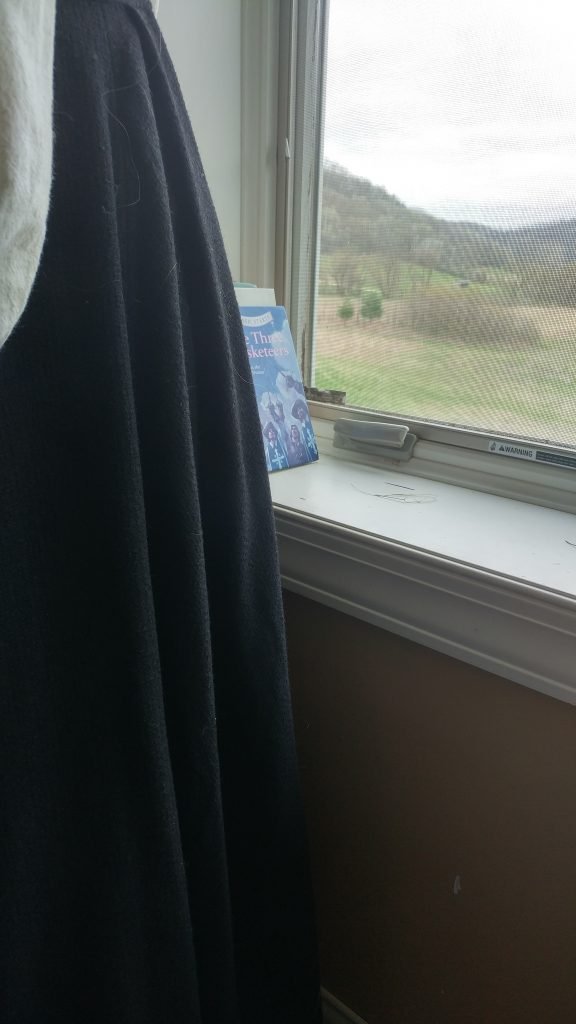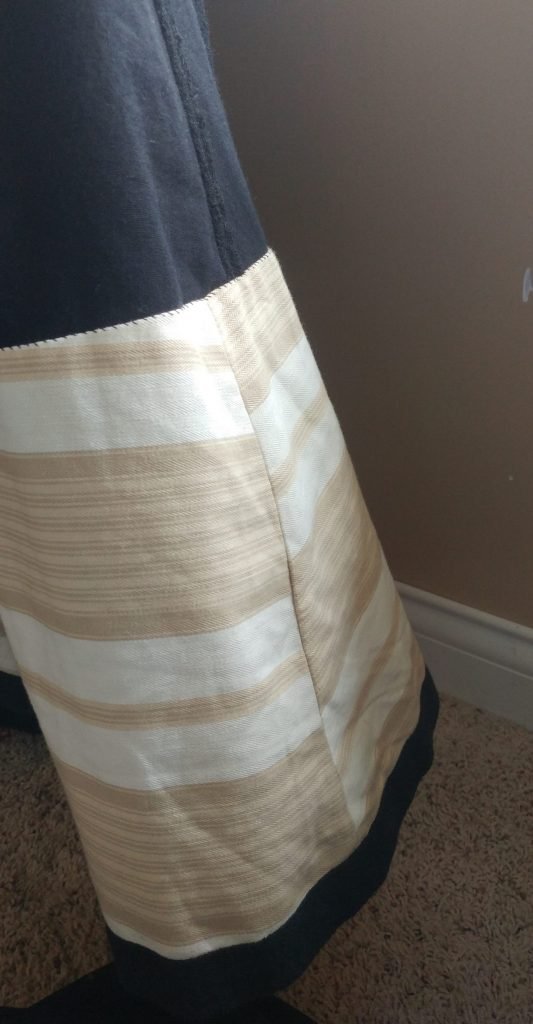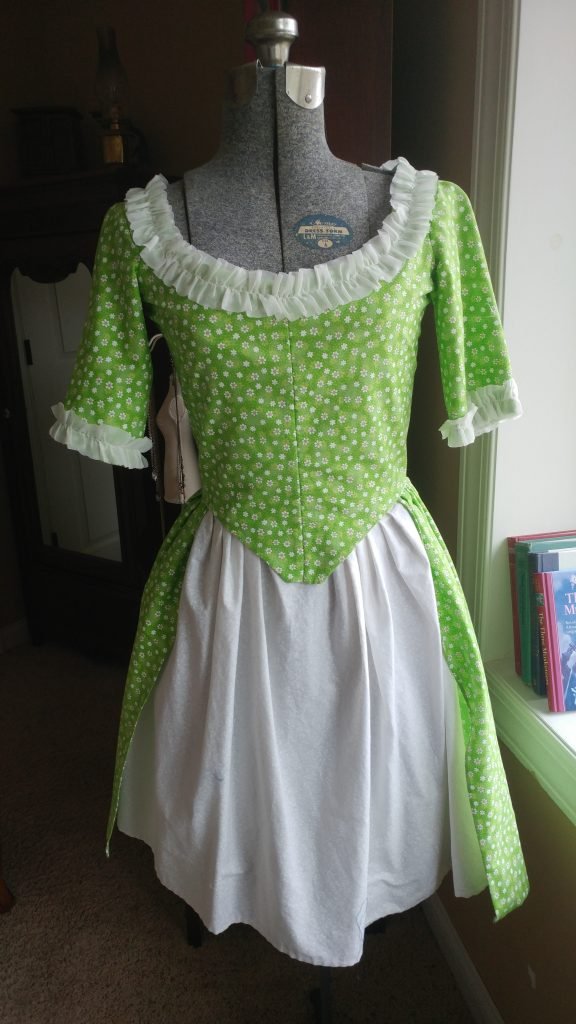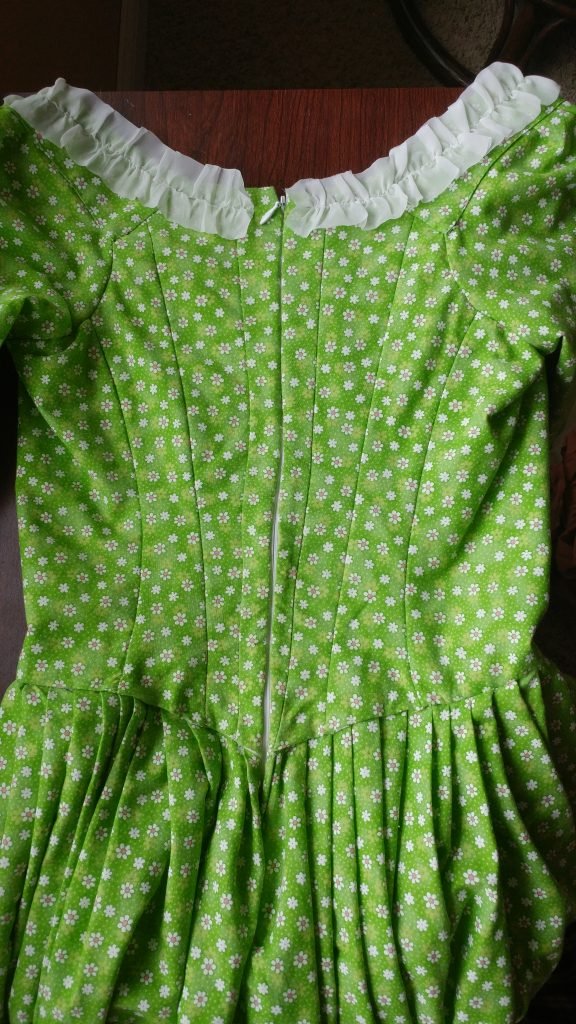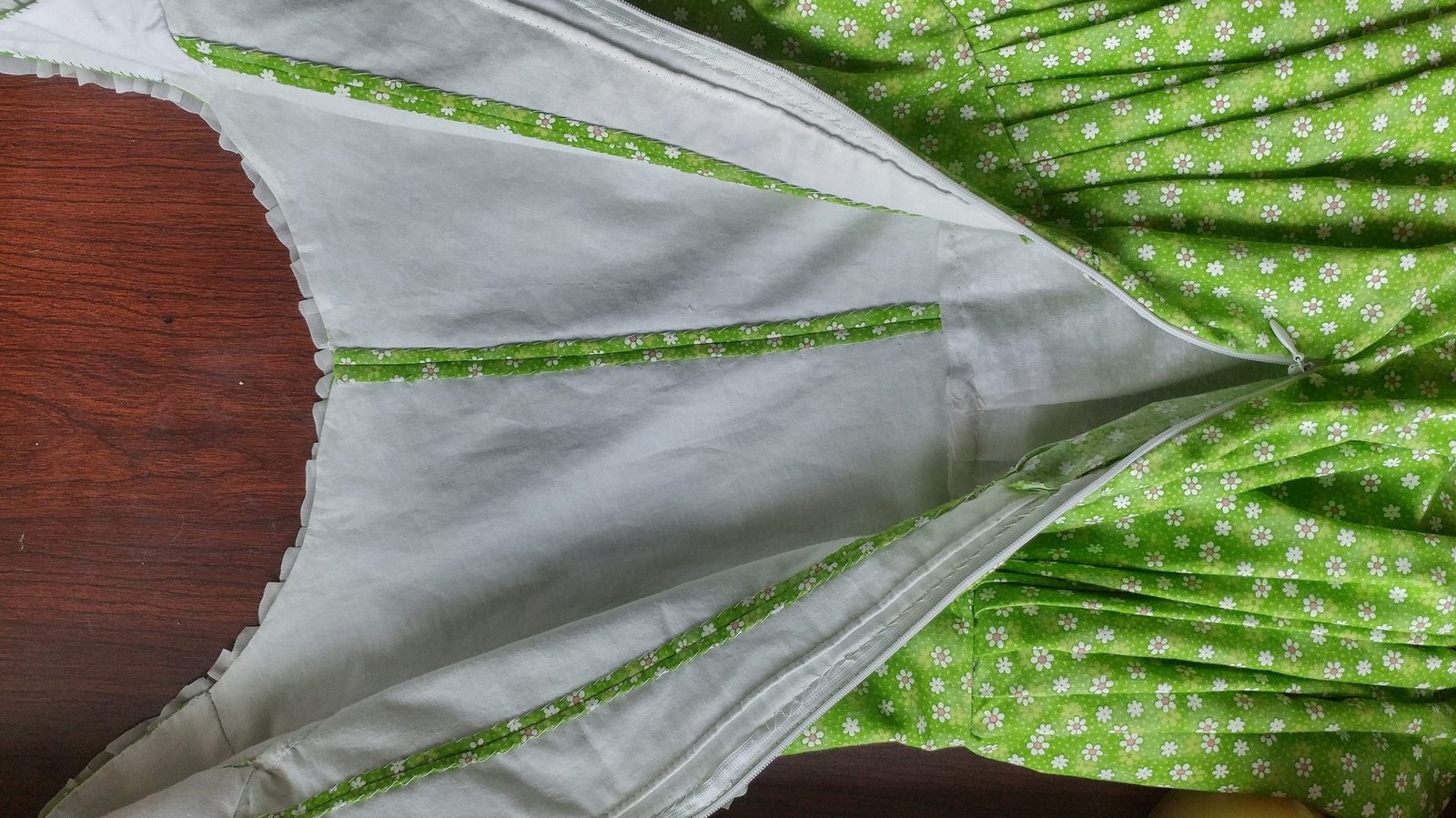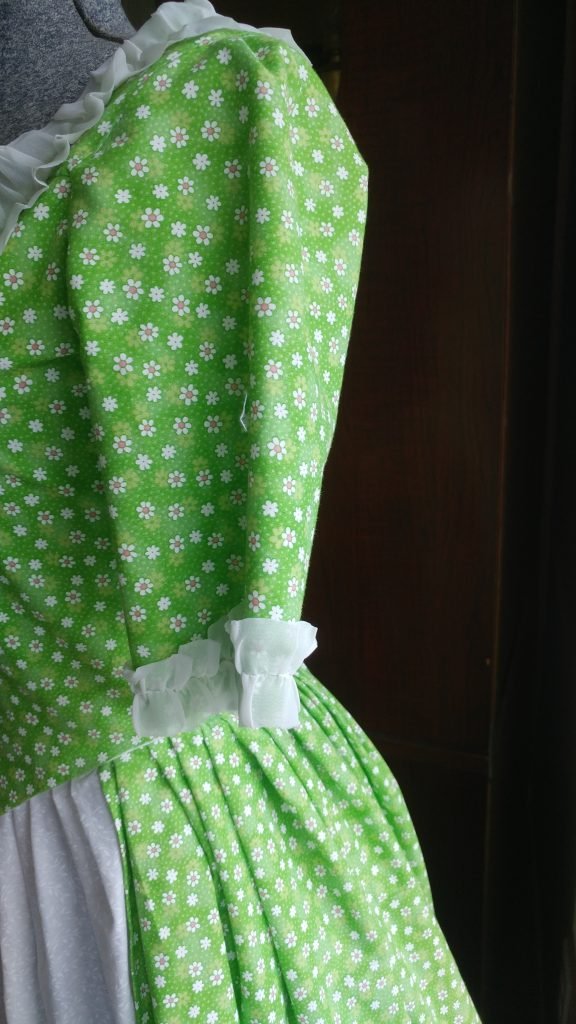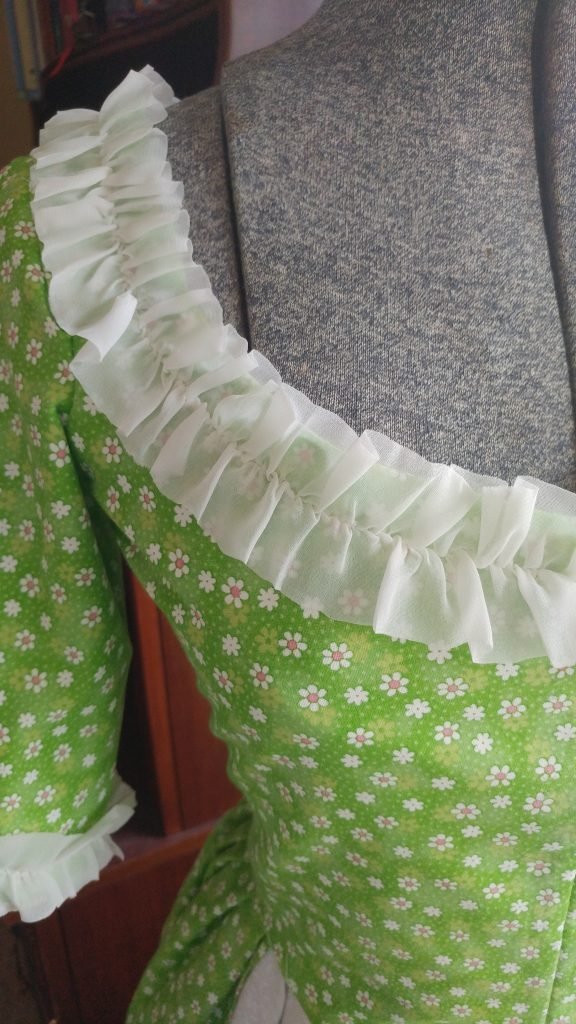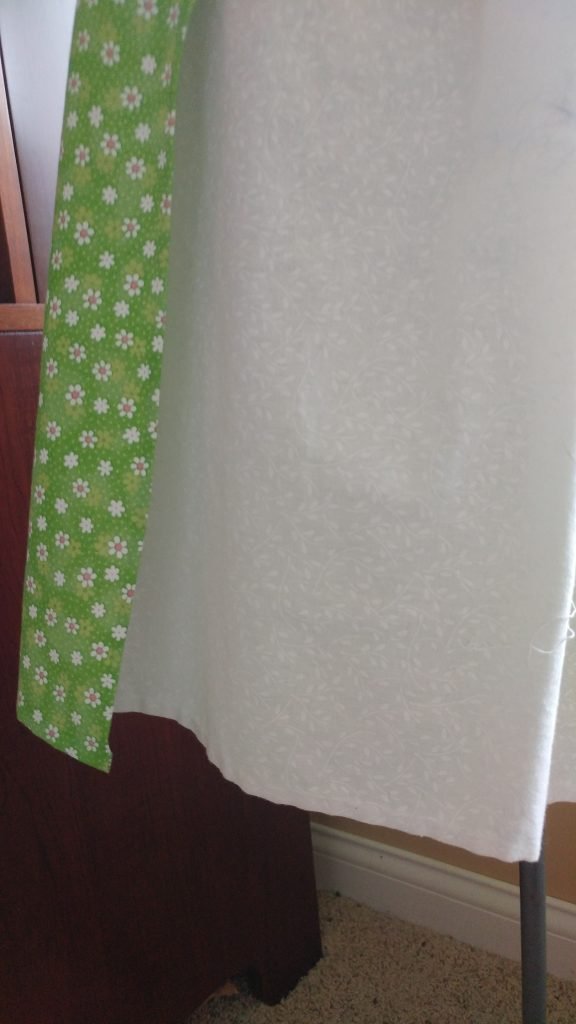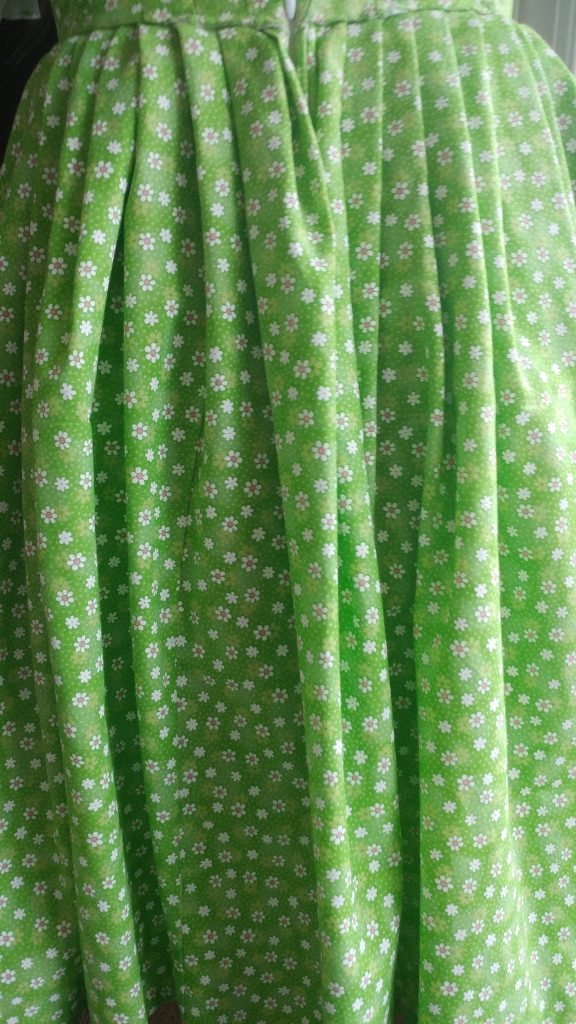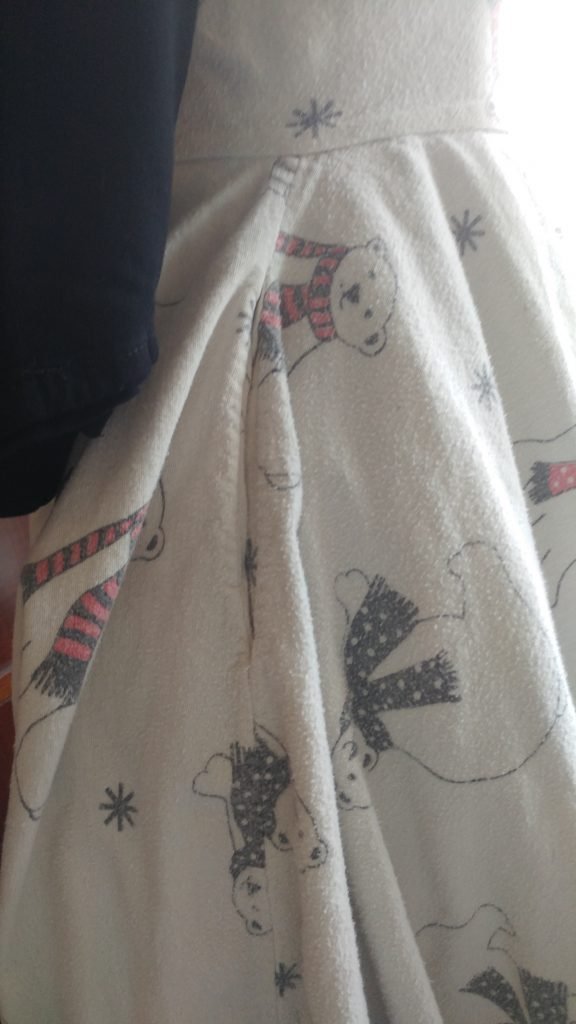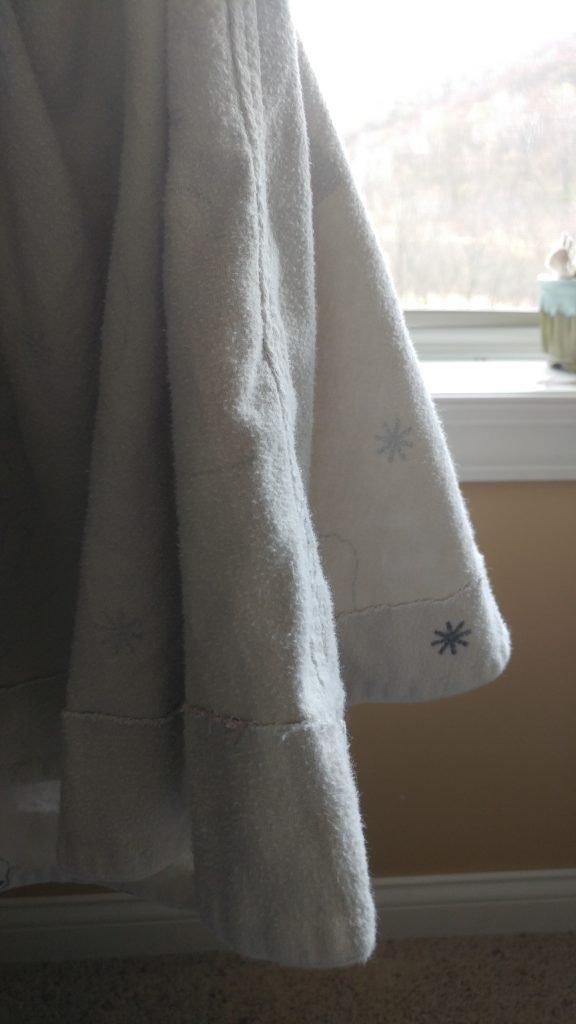
This late Victorian early Edwardian shirtwaist was made using a pattern from a Victorian drafting manual. The fabric was a course cotton that I bleached from beige to cream. The pleats were first basted into place then sewn. Shirtwaists in this era would usually have a collar but I have found an extant shirt like this one so I think it is fine.

I did a swirl embroidery pattern around the neckline since I had made a different that I was basing this one off of. That shirt had embroidery around the neckline so I copied that too. The main reason I didn’t like that shirt was that it was too short and it didn’t have sleeves. So I added those things to this one.

The sleeves are made of a puffy top sleeve and a tighter cuff that reaches to the mid forearm. This style of sleeve was popular in the early 1890s. The cuff fastens shut with seven buttons and hand sewn button holes on each sleeve.

The back closes with a three inch slit and two buttons and button holes. Shirts in the Victorian era would button all the way down back and I have not found any images of only a slit at the top, but back closures were still a thing so I think it is good enough.
